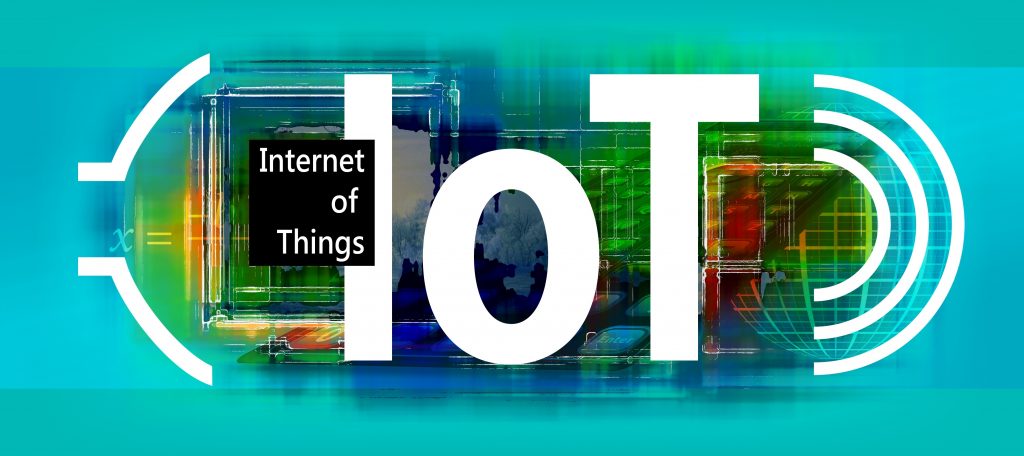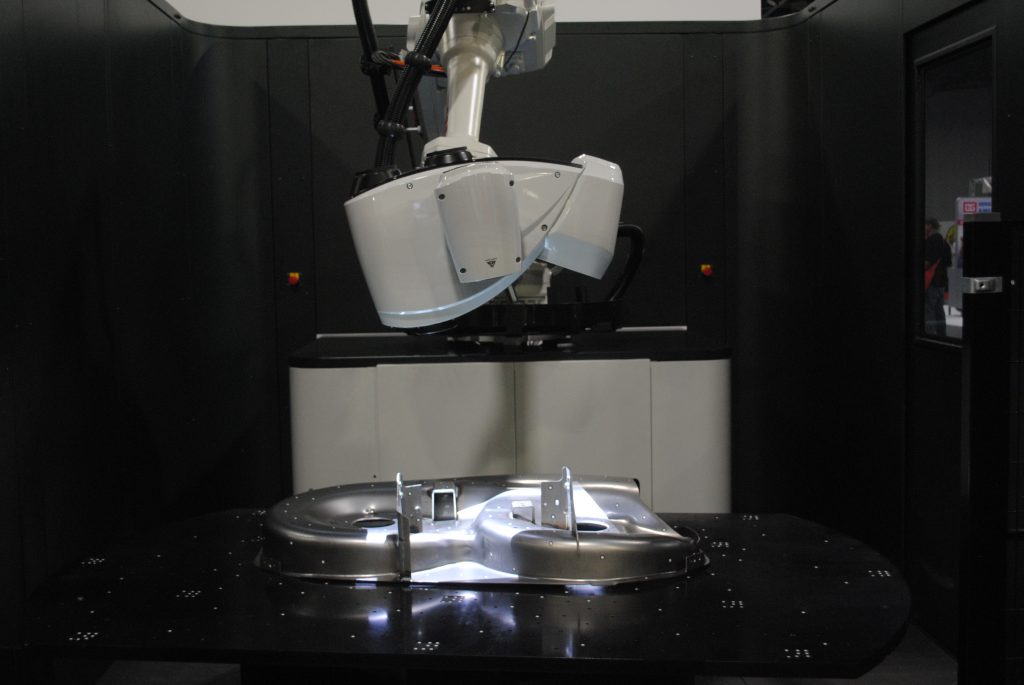The Industrial Internet of Things (IIoT) encompasses connected devices used in places like factories or warehouses instead of in consumers’ homes. Even though some of these technologies are relatively new, they have nonetheless upended industrial manufacturing and provided fascinating advantages. Here are some of the most notable examples of progress.
Providing Valuable Analytics That Boost Productivity and Output
Many types of IIoT equipment can work together and give users statistics on a single dashboard. In an industrial manufacturing setting, keeping output levels high is essential for maintaining profitability at a company.
Depending on the setup, it’s possible for a person to know which areas of a factory are most productive and streamlined. The collected analytics can also illuminate outdated processes and show which ones continually hinder a company. In a large setting, people working together to assemble a product may be so far apart that they usually don’t communicate with each other face to face.
The data provided by IIoT sensors and shown on an application dashboard can help plant managers overcome obstacles and maintain successful operations. However, it’s crucial to apply IIoT data to solve business problems and not merely collect data for the sake of it.
Sometimes, the most appropriate approach to take is for facility leaders to ask themselves what questions must be answered to solve the most pressing problems they face. The next step is to determine whether IIoT equipment can provide such insights.
In one case, Stanley Black & Decker depended on connected equipment when manufacturing power tools in one of its plants. Due to the scale of operations there, manufacturing processes were exceptionally complex, and the company wanted to tackle that issue by increasing visibility and productivity. Ultimately, the equipment effectiveness on a router production line went up by 24 percent, and immediate notifications allowed for faster decision-making.
 Predictive Maintenance Sensors Let Companies Avoid Downtime
Predictive Maintenance Sensors Let Companies Avoid Downtime
Unplanned downtime can lead to hundreds of thousands of dollars in preventable costs, and it’s more common than people may think. Research shows that 82 percent of businesses had unexpected lapses in production over the three years preceding the study. Unfortunately, many manufacturing brands are unable to envision the actual costs of such downtime until it happens.
IIoT sensors that monitor the operating conditions of equipment can give proactive alerts that allow managers to intervene and replace parts or take other actions before a piece of machinery fails. They can also give warnings to inform that a part or a machine is near the end of its typical lifespan. Then, companies can plan to invest in replacements before costly catastrophes happen.
Improve Overall Product Quality
In any industrial manufacturing setting, it’s essential to strike a balance between product quality and efficiency. In other words, if an assembly line becomes more efficient due to updated equipment but the produced items are more likely to have defects than before new technology was implemented, the investments may not be worthwhile.
The helpful thing about IIoT technology is that the associated sensors recognize when equipment performs as expected. Conversely, some of them can also detect minute changes, such as a robotic arm that tightens a bolt hasn’t completed enough rotations to make an attachment secure.
When managers keep an eye on the data associated with IIoT equipment, they can enjoy a heightened awareness of problems that could adversely impact the quality of the items produced.
On the other hand, a company may realize IIoT equipment is the missing link that allows it to substantially increase output without seeing a reduction in quality. That’s especially likely to happen if a company supplements the human labor force with IIoT equipment. People can become fatigued, making the quality more likely to go down or be less consistent. IIoT machines could prevent that possibility.
Avoid Recalls and Other Safety Issues
The ways IIoT equipment keeps tabs on how the machines function could help plant managers spot the conditions that could cause product recalls, then take corrective actions before that happens. In the food manufacturing sector, track and trace technologies allow greater transparency in the supply chain, thereby reducing risk and helping managers deal with issues promptly by contacting the relevant suppliers.
 Some IIoT devices also perform quality control tests within the manufacturing setting. The resultant information makes it possible for manufacturing facilities to know when things are amiss with foods or other products that could cause illnesses or harm to consumers. Then, distribution can cease until the producer identifies the scope of the issue and the cause of the problem.
Some IIoT devices also perform quality control tests within the manufacturing setting. The resultant information makes it possible for manufacturing facilities to know when things are amiss with foods or other products that could cause illnesses or harm to consumers. Then, distribution can cease until the producer identifies the scope of the issue and the cause of the problem.
Most industrial manufacturers realize that a decline in quality could immediately be problematic for a brand’s reputation. More specifically, consumers may decide to no longer do business with a company that has a safety scare.
Such a decision could persist in the long-term, too. In 2015, Chipotle had issues related to E. coli in its food. Data published in 2018 from a survey of more than 1,600 people showed that 37 percent of respondents don’t eat at Chipotle as often due to safety concerns. Although Chipotle is not a brand associated with industrial manufacturing, this example highlights how long reputational problems can persist.
Inspection robots are examples of the IIoT being used to cut down on potential recalls. Statistics indicate the industrial robots sector will reach $24.4 billion by 2025, due in part to robots used in that way. Some autonomous inspection robots go inside machinery to check internal components, and others use machine vision and laser measurements to spot faults such as cracks.
IIoT Sensors Work Well for Maintaining Optimal Environmental Conditions
Some industrial plants have exact specifications for characteristics such as temperature and humidity. If they don’t stay within a safe range, equipment could stop working as intended or wear out faster than expected.
Similarly, some things manufactured in factories — such as adhesives or other chemically based mixtures — require constant conditions to function as needed.
In other cases, such as the manufacturing stipulations for pharmaceutical products or other delicate items, products could become too warm, making them unusable. If that happens, the company can be saddled with substantial costs due to the likelihood of having to discard produced items or slow down production to test the products in question.
Fortunately, many IIoT sensors connect to smartphone apps and give people instant alerts that conditions have fallen outside of a predefined range. Then, the people in charge of maintaining a facility can speedily investigate possible issues. Here, as in some of the other examples mentioned earlier, the knowledge offered by IIoT sensors could limit the spread of a problem.
IIoT sensors can also measure how the environment changes over time and show historical data. Someone in a position of authority might notice a worrisome statistic that suddenly started showing up regularly. For example, if the temperature in a room began getting slightly warmer but stayed in the recommended range, that trend could indicate that refrigeration equipment needs servicing or replacement.
 Internet-Enabled Add-Ons Increase the Usability of Industrial Equipment
Internet-Enabled Add-Ons Increase the Usability of Industrial Equipment
When many companies think about updating their equipment to include IIoT technology, they assume the only option is to do away with old equipment during an upgrade. However, brands make products that allow users to update their legacy equipment with IoT sensors.
Keith Flynn is the senior director of product development at a company called AspenTech. The brand focuses on offering solutions that allow people to improve legacy equipment with connected components instead of replacing the machinery. Flynn estimates that the market worth of IoT upgrades could account for 22 percent of the total IoT market, which totals $1.7 trillion.
Flynn also asserts that it’s much less expensive to apply these kinds of sensors to legacy machines instead of buying entirely new IIoT setups. As AspenTech and other companies like it provide equipment catering to customers who want cost-effective options, more businesses could realize there’s no better time to invest in IIoT equipment. Doing so doesn’t necessarily require getting more modern base equipment.
IIoT Equipment Can Keep Workers Safer
It’s evident that IIoT technology could play a crucial role in preventing worker accidents or unsafe working conditions, too. Some types of personal protective equipment (PPE), such as hard hats and masks, take measurements as people use them. Then, those gadgets can give supervisors details about factors that could be dangerous if not remedied.
Some equipment also has geolocation capabilities to ensure employees in distress have access to emergency responders faster than they otherwise might. That aspect is particularly advantageous in a sprawling factory where workers are not in eyesight or earshot of each other.
IIoT equipment can also help prevent errors due to inexperience. While working in a factory, a person could wear connected goggles that work with augmented reality (AR) and show their perspective to an expert working elsewhere. Then, that more experienced individual could give thoughtful insights that could prevent mistakes.
A survey published in 2018 revealed that 82 percent of enterprises expect to use AR smart goggles within the next three years. Some of those applications may not be safety-related, but it’s not difficult to see how many functions of the high-tech eyewear could enhance worker safety.
The IIoT Shows Substantial Potential
This list emphasizes the exciting range of ways to rely on IIoT devices to improve productivity, safety, quality and more. As a growing number of manufacturers release newer technologies, the possibilities for using them in industrial manufacturing will increase as well.



















